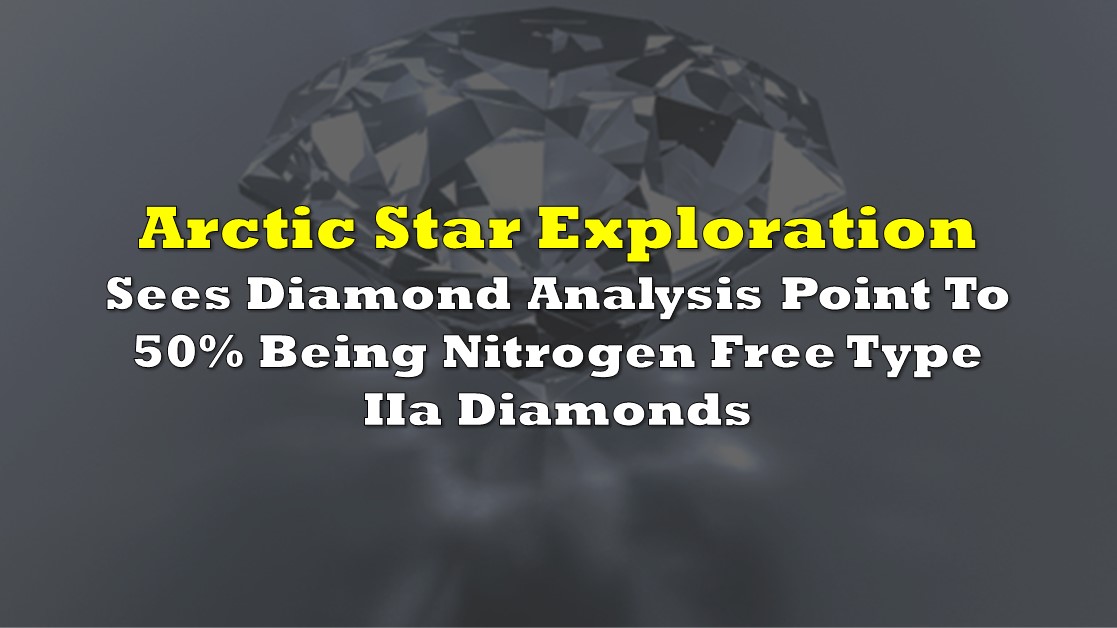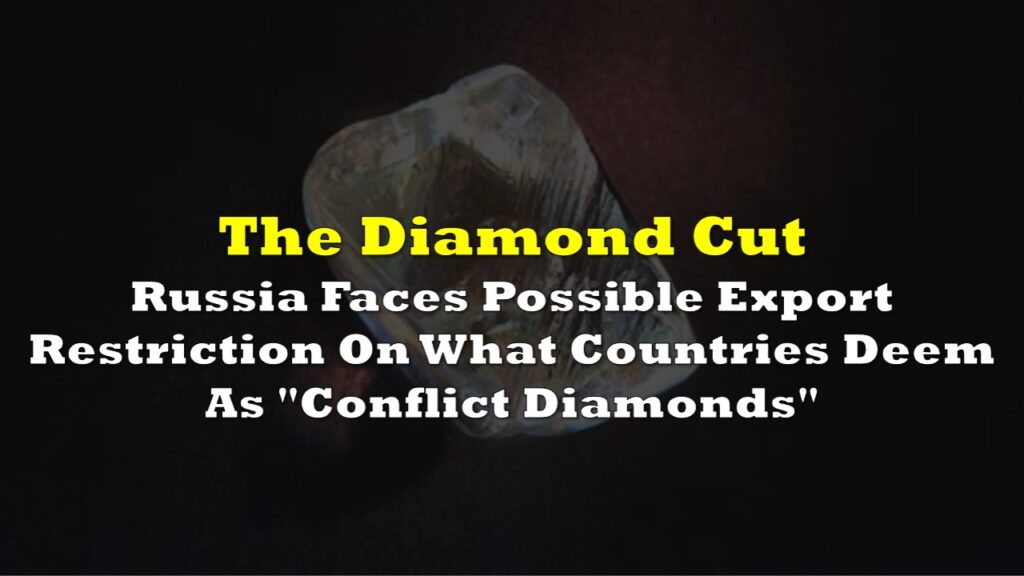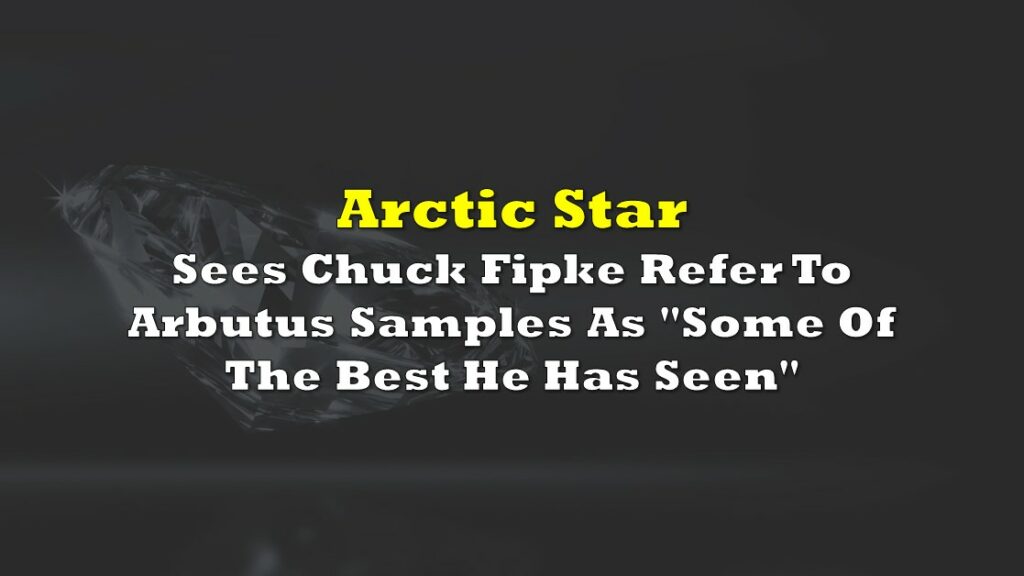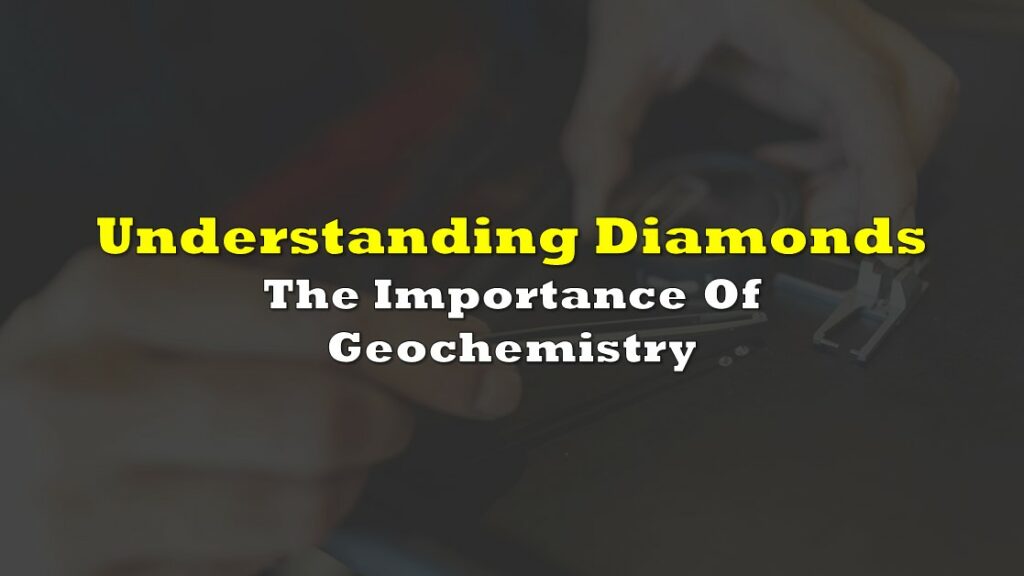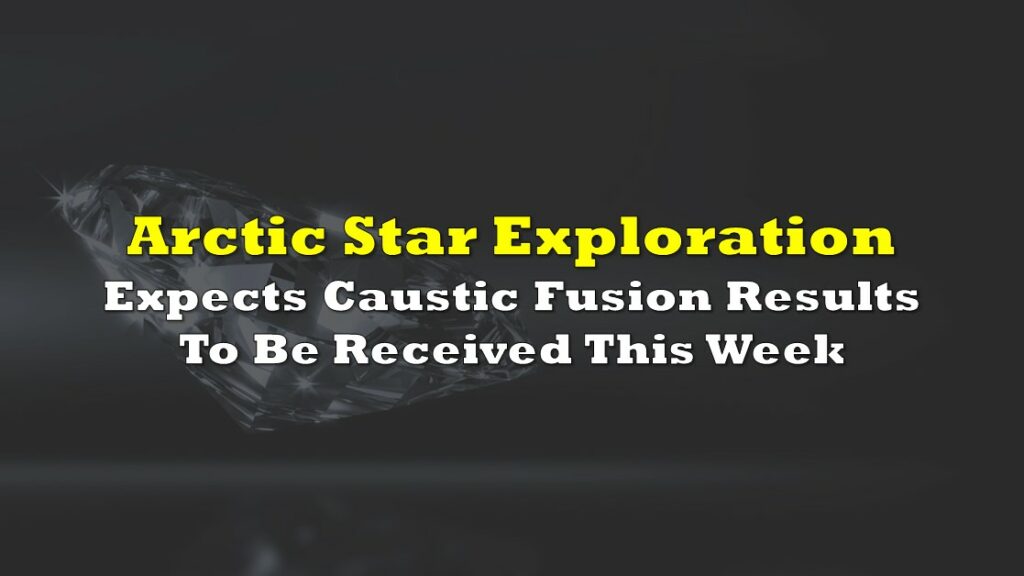Arctic Star Exploration (TSXV: ADD), a firm focused on exploring for diamonds in the Northwest Territories of Canada, this afternoon released the results of a diamond type study. The study was conducted on diamonds collected from the firms Diagras diamond property last year.

The study, conducted by the Saskatchewan Research Council’s diamond laboratory, was conducted on twelve diamonds the company collected from the Sequoia kimberlite complex that are over 0.3mm in diameter. The analysis consisted of Fourier Transform Infrared spectrometry, also known as FTIR, to examine the diamonds.
The study itself is focused on identifying the concentration and aggregation state of nitrogen within the diamonds, with the results divided into Type I and Type II, based on whether nitrogen is present or not. Further, those types are then divided into whether nitrogen atoms are isolated or aggregated, and if boron impurities occur.
Results from the study demonstrate that 50% of the diamonds tested are nitrogen free type IIa diamonds, while 33% are type IaA, and 17% are type IaB. Comparably, on a global scale type IaA is said to dominate 96% of diamond deposits, and type IIa make up roughly 2%.
Type IIa diamonds are notable for their lack of nitrogen and boron impurities, and are most commonly the top white colors or shades of brown, with some also being pink in color. All ten of the largest rough diamonds recovered have been this type, with many in this classification being high-value, top color, large specials.
“The presence of a significant proportion of Type IIa diamonds in the Sequoia kimberlite complex caustic fusion samples is another line of evidence of the potential to host plus 50ct, high value diamonds, backed up by the collaborative indicator chemistry and the relatively coarse, low gradient diamond size distribution. Finally, SRC describes all the diamonds as clear and white, this is unusual as most kimberlites have a mix with a high percentage of boart,” said VP of Exploration Buddy Doyle.
Drilling is currently ongoing on site as Arctic Star looks to determine the shape and size of the Sequoia kimberlite, with the firm commenting that current guidance is pointing to a grade “between 20cpht to 70cpht,” as per Doyle. Further, the company is planning a bulk sample in excess of 1,500 carats for early 2023 based on the data collected from drilling, from which the firm will be able to determine the economic value of the complex.
Arctic Star Exploration last traded at $0.10 on the TSX Venture.
FULL DISCLOSURE: Arctic Star Exploration is a client of Canacom Group, the parent company of The Deep Dive. The author has been compensated to cover Arctic Star Exploration on The Deep Dive, with The Deep Dive having full editorial control. Not a recommendation to buy or sell. Always do additional research and consult a professional before purchasing a security.

